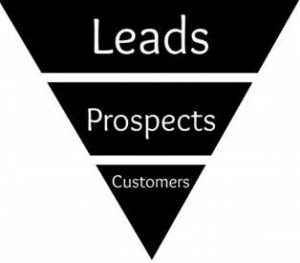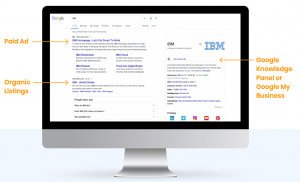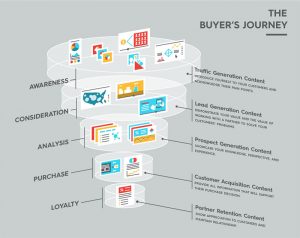Is your e-commerce site experiencing weak organic traffic? Columnist Pratik Dholakiya shares some common issues that impact SEO for online retailers and offers a few suggestions.

Not long ago, I talked about 16 very specific on-site SEO mistakes that I see very often, and how to fix those issues.
Today, I want to shift the focus toward problems that plague e-commerce sites specifically. I’ll also be addressing on-site problems that have a bit more to do with strategy and a bit less to do with specific technical mistakes.
Finally, I wanted to make sure we had some real-world examples to refer to, so I mined case studies from the industry to demonstrate the concrete impact these changes can have on your search traffic.
Let’s take a look at these problems and what you can do to resolve them.
1. Weak product descriptions (or none at all)
Since e-commerce sites usually have a very large number of products, it’s common for product descriptions to be short, automated and provided by the manufacturer.
Unfortunately, this creates a few problems for SEO:
- Short descriptions give the search engines very little content to work with, and this is a problem. After analyzing 1 million search results, Backlinko concluded that longer content generally performs better: The average Google first page result is 1,890 words long.
- Automated descriptions that swap a few words into a template can create duplicate content issues.
- Descriptions provided by the manufacturer are almost certainly replicated on other sites, meaning that you are not providing anything unique for the search engines to index. This means the search engines have no reason to rank you above competitors.
It’s not always possible to manually update the product descriptions for every page on your site, but this action isn’t strictly necessary to resolve these issues. A focus on turning just a few of the highest-value product pages into full-fledged landing pages with conversion-based copy can have a dramatic effect on the rest of the site.
An Australian retailer named Toy Universe was able to increase its search engine traffic by 116 percent in just four months. That doubling in traffic also doubled sales. While many changes were involved in that boost, a large chunk of the effort went toward work on the product descriptions.
Put simply, the site did not originally feature any unique product descriptions or unique content for the category pages. Adding them in was a huge piece of the puzzle.
The Motor Bookstore serves as another classic example.
When Google first released the Panda update, this online automotive bookseller saw a 38.5 percent drop in organic search traffic overnight. The brand was well respected by its customers, but their product descriptions were supplied by the publishers; as a result, those descriptions were identical to the descriptions found on many other sites.
That duplicate content didn’t look good to Google — hence the drop in traffic after Panda was introduced. (These days, Panda is baked into Google’s core ranking algorithm, so your site could be affected by it without your knowing.)
Eliminating duplicate product descriptions and replacing them with unique descriptions can help resolve this issue. Opening up your site to user-generated content like reviews can also help by introducing new content to reduce the proportion that is duplicate — a strategy that has obviously worked wonders for Amazon.
On that note…
2. Not including user reviews
In addition to diluting duplicate content, user reviews seem to affect search results in other ways. It’s not entirely clear whether the presence of reviews affects search engine results directly or indirectly, but the impact is clear and unambiguous.
Yotpo conducted an analysis of over 30,000 businesses that added user reviews to their site and measured how this impacted organic search traffic. The results were stark: Over a period of nine months following review implementation, they found that Google organic page views per month grew by over 30 percent.
Including user reviews can be scary, as this allows buyers to leave negative feedback on your products. But there is a wealth of evidence that including user reviews increases conversion rates. In fact, in a bizarre twist of fate, more diverse product ratings improve conversions better than five-star-only reviews.
If you’ve been hesitating to include user reviews because of concerns about negative feedback or due to the difficulties of implementation, I highly recommend you take the plunge now. The impact is almost sure to be positive.
3. No unbranded keyword optimization
Perhaps one of the most common issues is that many e-commerce product pages are simply not developed with keywords in mind.
The typical product page is built around a brand and model name. It’s certainly true that some consumers may be searching for these names, and they should definitely be included in the title tag and the other important locations on the page.
That said, most consumers are likely not searching by brand or model name, especially when it comes to more obscure brands.
For that reason, it’s important to include more generic, popular phrases on your pages as well.
This isn’t to say that you should abandon any more niche keyword usage. What I mean is that you should be going after phrases that consumers are using when they search for products like yours, and that means going deeper than branding to focus on the actual mechanics of the consumer journey.
White Hat Holsters did just that, and the result was a 100 percent increase in sales and a 400 percent increase in search engine traffic. The traffic grew from 2,000 to 8,000 visits per week in just eight months.
To accomplish this, they:
- used keyword tools and competitive research to identify phrases that consumers were actually using to find products like theirs.
- analyzed the meta descriptions, image alts, URLs and headings.
- chose three to five closely related keywords to target for each page and updated the above-the-fold region of the pages to semantically reflect those keywords.
- created a blog to capture keywords searched for by consumers who were further up the funnel.
4. Focusing too heavily on transactional keywords and not developing informational content
It’s incredibly difficult to rank for “money” keywords, and it’s usually a failing strategy to focus too heavily on them, especially if this means you are neglecting the informational keywords that target customers who are a bit further up the funnel.
By shifting some of your attention toward less transactional keywords and toward more informational ones, you can rank for less competitive keywords and build a stronger reputation with the search engines.
Ranking for these less competitive phrases doesn’t just add traffic for those individual phrases; it can also improve your site’s overall reputation with the search engines. This may be because it influences behavioral metrics. Whatever the cause, I’ve personally witnessed this effect many times.
Darren Demates helped a medical e-commerce site skyrocket its search traffic by an incredible 1,780 percent using an interesting keyword method he calls the “double jeopardy technique.” Here was his process:
- He obtained keywords by adding the page URLs into the Google keyword planner, instead of the usual method of guessing keywords and looking at the related suggestions. He also put the focus on informational keywords instead of transaction keywords.
- He used SEMrush to find the keyword difficulty for the keywords recommended by the Google keyword planner, then weighed the difficulty against the potential traffic in order to make a judgment call about which keywords to focus most heavily on.
- He used a “site:example.com [keyword]” search to identify which page on the site already had the most ranking potential for that keyword.
- He searched forums using an “inurl:forum [keyword]” search to find the types of questions people were asking about his informational keywords.
- He updated the thin blog posts on his site to answer all of the questions he could find on forums that people had about the keywords.
I’d recommend taking notes here and putting this to use. The possibility of increasing search engine traffic by an entire order of magnitude isn’t the kind of thing you want to ignore.
5. Implementing poorly planned site redesigns
This one hurts to watch.
I’ve had clients rush ahead with a site design without notifying me, and I’ve had new clients who approached me after a site update tanked their rankings.
This experience is incredibly painful, because a site redesign intended to modernize and beautify a site, or to implement changes expected to maximize conversions, can end up obliterating your organic search traffic. Few things hurt more than dropping a wad of cash on something and having it backfire on you.
If you implement a site redesign without taking SEO into account, this is almost bound to happen. Pages that ranked well can get lost, content that was pulling in traffic can get rearranged, and the results of past wins can get lost.
Seer Interactive assisted one retail client who had redesigned their site in order to secure the site with HTTPS. Their redesign caused their organic traffic to plummet by a staggering 75 percent. The situation was so bad that they no longer ranked for their own brand name.
What happened?
- The redesign deleted several key pages that had been pulling in traffic. This didn’t just cause the traffic from those pages to get lost, it also created 404 errors where other pages on the site still linked to the missing pages. This can cause PageRank to drop like a brick.
- The site had a new URL structure, meaning all of the links pointing to the old pages were now pointing to nothing, and all of the authority the site had built up in the past was tossed right out the window.
- The redesign introduced copies of pages, producing duplicate content that may have caused the site to be algorithmically penalized.
After fixing those issues and introducing a long-term content strategy, the site experienced a 435 percent growth in search traffic. This led to a 150 percent increase in transactions, and a 64 percent increase in revenue. This was accomplished in six months.
Do not execute a site redesign without the help of an SEO professional. The results can be absolutely horrifying.
6. Poor migration between e-commerce platforms
It’s a safe bet that most e-commerce sites are built using third-party platforms. This is a mutually beneficial arrangement that allows the e-commerce business to focus more on its core business and less on web development.
It’s not uncommon for a site to outgrow one platform and switch to another as their market share increases, or to switch platforms in order to gain access to previously unavailable features. Unfortunately, switching e-commerce platforms can sometimes hurt rankings.
In one case, TotalHomeSupply.com found itself losing 37 percent of its traffic after switching from Volusion to Mozu. Despite Mozu being owned by the same company and serving as the enterprise-level version of the same platform, the transfer led to technical SEO issues. (This isn’t a knock against Volusion — this can happen with any e-commerce platform if you aren’t careful.)
The drop in traffic led to a 21 percent drop in transactions, despite a 24 percent boost in the conversion rate that Mozu may have contributed to.
The issue with Mozu was that the pagination was handled by JavaScript instead of HTML. Inflow worked together with Mozu to eliminate the JavaScript issues, allowing Google to properly crawl the pagination, which was invisible to the search engines when JavaScript was involved.
In addition, they trimmed thin content that had led to a demotion from Google’s Panda update and introduced new, high-quality content.
The result was a doubling in year-over-year organic revenue and a restoration of organic traffic to levels higher than before the site migration.
As with site redesigns, make sure an SEO professional is involved any time you update your e-commerce platform.
7. Not optimizing for your most promising keywords
In the section on informational keywords, we mentioned Darren Demates’ “double jeopardy” technique. In addition to focusing on information keywords, part of the reason for the strategy’s success also lies in the fact that it leverages the keywords that already show promise.
We mentioned that his technique involves performing a site: search to identify which page on the site already ranks best for any given keyword.
A related method of identifying keywords is to analyze your existing rankings to see which keywords are already performing well, and to make changes in order to better optimize for those keywords.
This is what Digital Current did for Sportsman’s Warehouse.
They identified “low-hanging fruit” pages which were already ranking fairly well for keywords, then updated those pages by tweaking the titles, headers and content in order to better reflect the keywords. They were careful to focus on keywords which would be “in season” shortly after the changes were made.
In addition, they performed some link building and improved the quality of the on-site content.
The changes resulted in a 31 percent year-over-year increase in organic search traffic and a 25 percent year-over-year increase in organic search revenue. This was a tripling on the ROI they had paid for the SEO work.
There are two primary methods you can use in order to optimize for promising keywords. The first is to run your URLs through the Google Keyword Planner as in the “double jeopardy” technique.
The second is to look at your keyword rankings in the Google Search Console or a tool like SEMrush to identify keywords that are already ranking on the second page or so. If these keywords are ranking without having already been optimized, they are a golden opportunity, and you should capitalize on them by updating your titles, headings and content.
This second approach is sometimes called the “low-hanging fruit” technique.
In the process, it’s important to make sure you aren’t cannibalizing your rankings for more important keywords, and, of course, to verify that the changes in the content will be useful for users and will not detract from the primary message of the existing page.
Time to put this information to use!
Don’t close that browser tab just yet. Leave it open and start taking a look at your site. Take a look at the problems I’ve listed here, and ask yourself if you’re facing any of them right now. You’ll thank me when your search traffic starts climbing.
[Article on Search Engine Land.]
Some opinions expressed in this article may be those of a guest author and not necessarily Marketing Land. Staff authors are listed here.
Marketing Land – Internet Marketing News, Strategies & Tips
(102)









